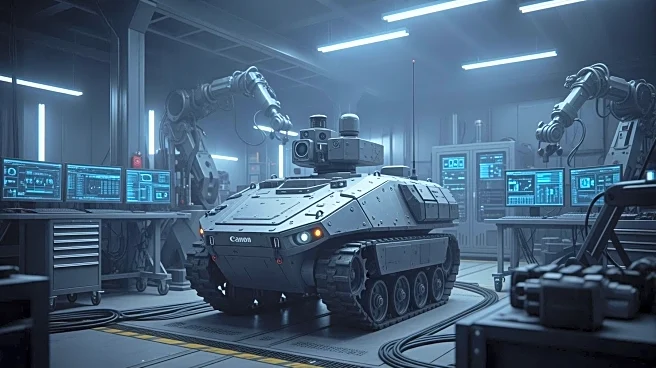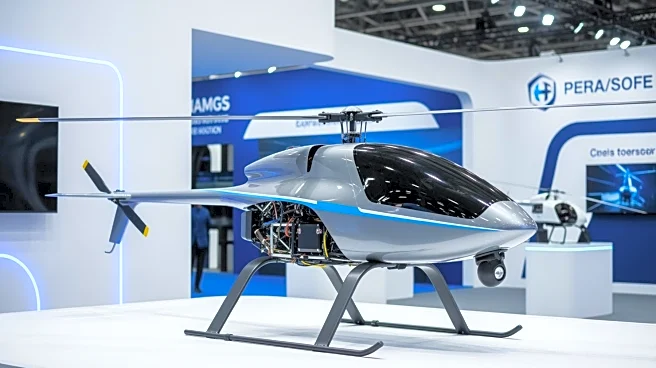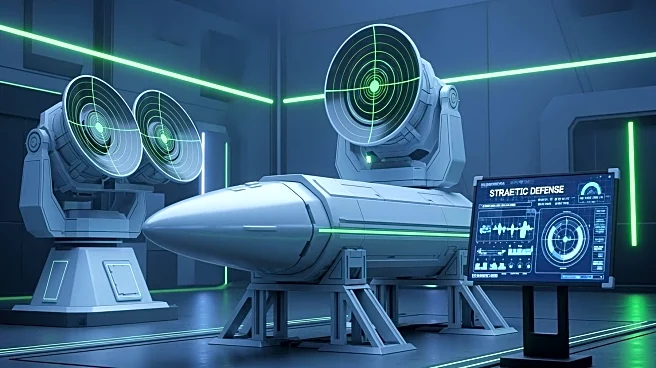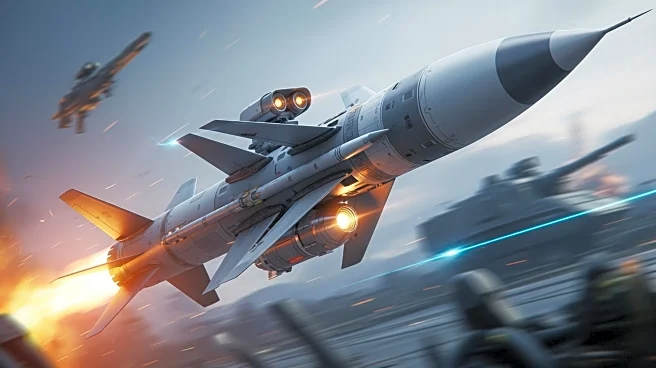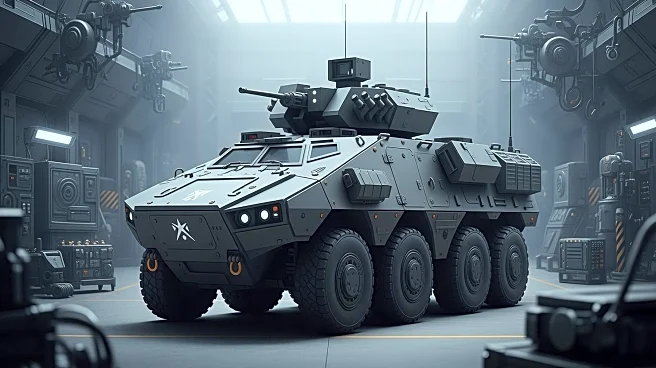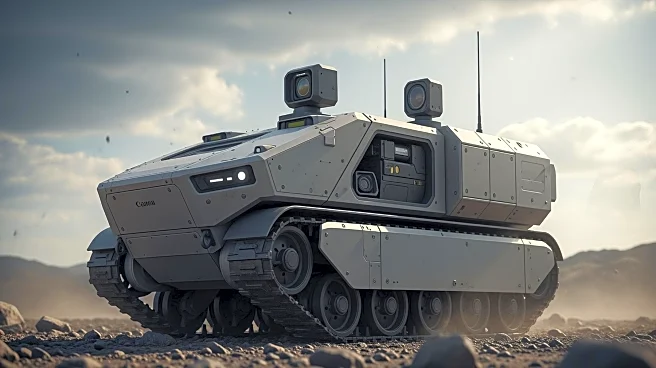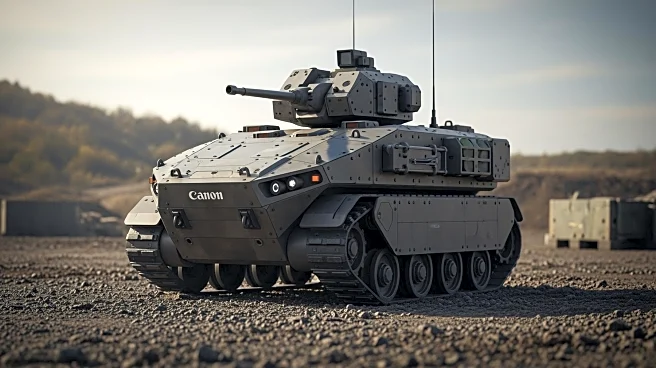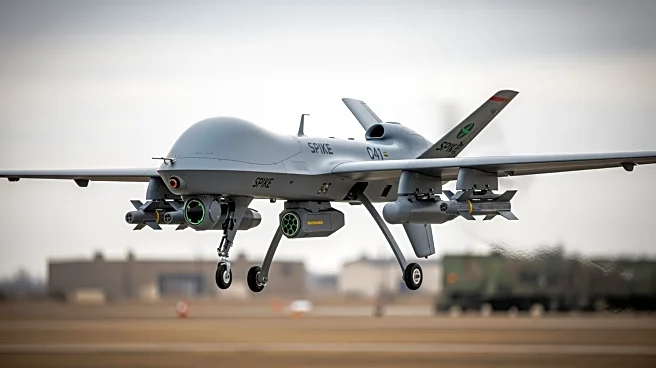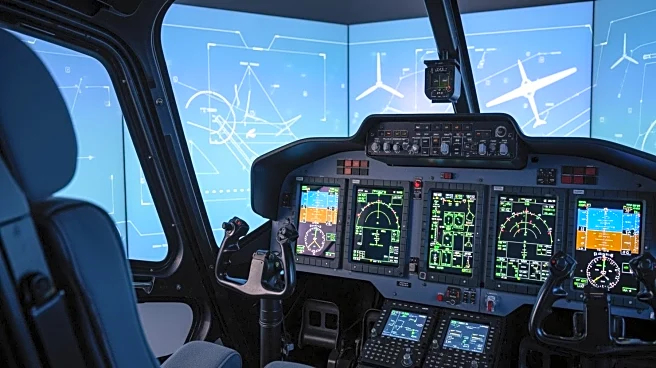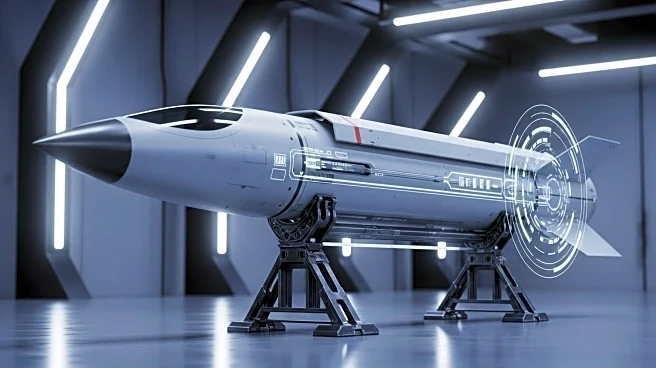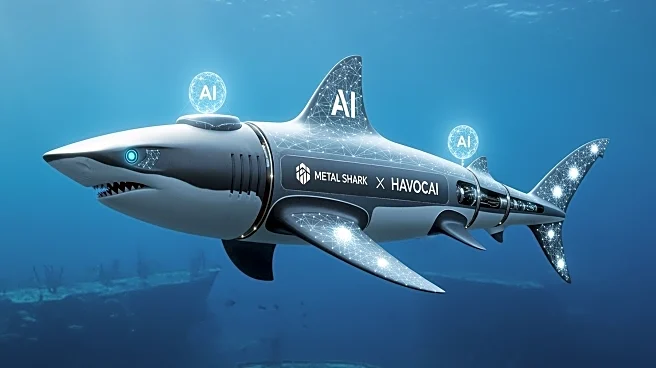What's Happening?
Textron Systems has joined forces with AM General and Carnegie Robotics to develop a modular uncrewed ground vehicle (UGV) for the US Army. This collaboration is part of the Medium Modular Equipment Transport
Trailer (M-MET) program, which aims to enhance the Army's modernization efforts. The UGV is designed to autonomously transport supplies and operational energy between Brigade Support Areas and forward units. The platform will feature a modular design, allowing it to undertake various missions, including carrying critical supplies and generating operational energy. The vehicle will be equipped with a rugged all-terrain chassis, advanced suspension, and a hybrid-electric powerpack capable of delivering over 30kW of exportable power. Textron Systems will focus on integrating drive-by-wire systems and diagnostics, while Carnegie Robotics will develop the autonomy software stack and sensor fusion technologies.
Why It's Important?
The development of this autonomous ground vehicle represents a significant advancement in military logistics and operational capabilities. By enhancing mobility and sustainment, the UGV will support the Army's Transformation in Contact and Multi-Domain Operations strategies. The collaboration leverages the industrial strength of AM General, the autonomy expertise of Carnegie Robotics, and Textron Systems' experience in vehicle control and payload integration. This initiative underscores the defense industrial base's commitment to meeting the evolving needs of the US Army, potentially leading to increased efficiency and effectiveness in military operations. The integration of advanced technologies such as hybrid-electric power and modular systems could set new standards for military vehicle design and deployment.
What's Next?
The M-MET request for proposal is anticipated to be released in 2026, marking the next phase in the development of this autonomous platform. As the project progresses, stakeholders including military leaders and defense contractors will likely monitor its impact on Army operations and logistics. The successful implementation of this technology could lead to further collaborations and innovations in military vehicle design. Additionally, the adaptability of the UGV for rapid integration of various mission payloads suggests potential for future upgrades and enhancements, aligning with the Army's long-term modernization goals.
Beyond the Headlines
The collaboration highlights the growing importance of autonomous systems in military applications, reflecting broader trends in defense technology. Ethical considerations regarding the use of autonomous vehicles in combat scenarios may arise, prompting discussions on regulations and guidelines. The integration of hybrid-electric power systems also aligns with global efforts to reduce carbon emissions, suggesting potential environmental benefits. As the defense industry continues to innovate, the balance between technological advancement and ethical responsibility will remain a critical focus.
